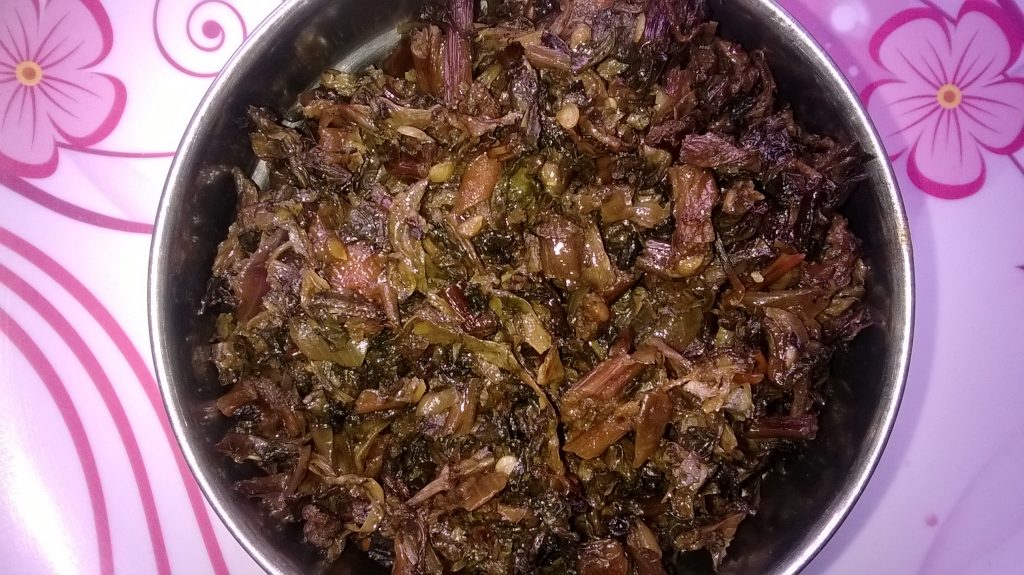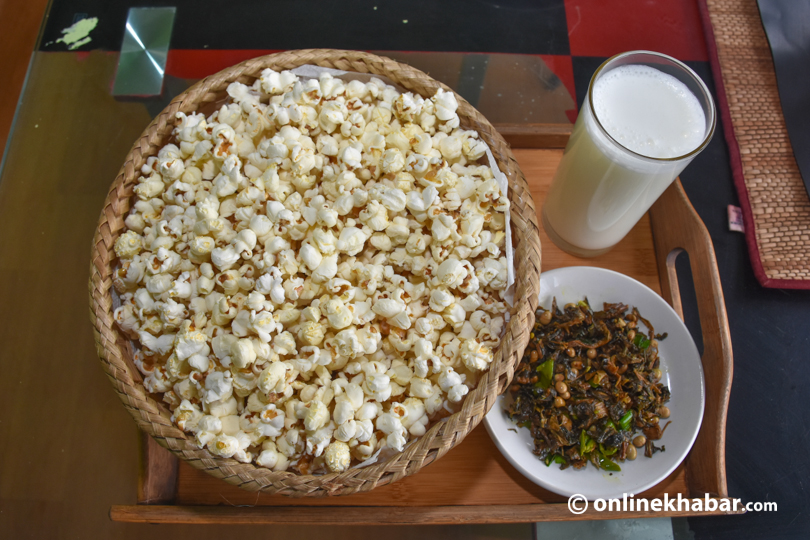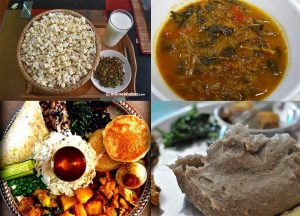
Gundruk is one such Nepali side dish that guarantees to have your mouth watering with just its thoughts. It is a popular choice that you see on the meal plate of an average Nepali. But, it is also a popular choice among tourists visiting Nepal or interested in trying Nepali food. It is also a well-known side dish among the Nepali diaspora all over the world so much so that they become sentimental whenever gundruk is mentioned. It is regarded as one of Nepal’s national cuisines.
But, what is this mouth-watering dish? Here is all you need to know.
Its origin
Gundruk is fermented vegetables severed as a side dish. It is majorly made from radish, spinach, turnip, mustard, or cauliflower leaves. It is a safe and tasty way to get minerals during the off-season. The leaves of each vegetable have a distinct taste. Its flavour is determined by the quantity of acidity it gains throughout the fermenting process.
There is a popular theory that during King Prithvi Narayan Shah’s unification of greater Nepal, he made multiple failed attacks in Kirtipur. People then saw a shortage of food and other basic necessities so they began utilising their homegrown goods and veggies. Due to restricted output, people began to store meals, as well as green vegetables, in the mud to use them for a longer length of time.
As the shortage lasted longer, they ate practically all of the food they had saved in order to survive. So they started consuming those meals, including leafy vegetables. One such way was to ferment the leaves that added a nice acidic flavour, so the people started practising those fermented leafy vegetables. This was the beginning of manufacturing gundruk.
The greens extracted from the pit were spread and dried in the fields. Later, some individuals began cooking with the same dried greens that they had collected from their farms. Kirtipur became famous for its somewhat sour yet sweet-tasting dried greens (vegetables).
Nowadays, it is produced in various ways and is prepared in a variety of meals.

Different types of gundruk
Mustard: Mustard gundruk consists of fermented mustard leaves. It is widely eaten as a vegetable and as a pickle. Because of fermentation, it gets a sour flavour. It is especially good for the ill and elderly since it provides the body with the necessary energy and nourishment. It also has a little acidic flavour, making it suitable for them.
Mustard greens are high in antioxidants like beta carotene, which helps preserve your skin and minimise diabetes risk factors. The greens are also high in B vitamins, such as thiamine (B1), niacin (B3), and pyridoxine (B6). This dish also contains a lot of vitamin K.
Turnip: Turnip gundruk is prepared by fermenting turnip leaves. It gets a slightly stronger acidic flavour than mustard. It is also beneficial to the elderly and the sick. It also offers several health advantages, including lowering anaemia, preventing osteoporosis, and preventing and treating cancer.
Radish: Radish gundruk is the most acidic of all green vegetables. It has a strongly acidic flavour, as well as the healthiness of radish, which is beneficial for winter and adds a lot of flavour and depth to the curry. It goes well with dhindo and meat. Radish leaves are high in magnesium and vitamins C and K, and they may aid with memory loss as well as protect lung tissues from oxidative stress and damage.
Cauliflower: Cauliflower gundruk, believe it or not, is also a thing. Cauliflower leaves and stems are fermented. Cauliflower leaves are high in both fibre and vitamin C. It also has some vitamin A, folate, calcium, and potassium, as well as selenium, which combines with vitamin C to strengthen the immune system. It has a moderately acidic taste, similar to turnip gundruk, making it ideal for ill persons or those who want a less acidic taste.
Dishes made with gundruk

Soup: Gundruk is often cooked into a thin, watery soup with garlic, onions, tomatoes, chillies, and occasionally potatoes or eggs. It is generally served with rice or dhindo.
It is often soaked in water for a few minutes before washing and squeezing off excess water. For this, you need to heat a deep-frying pan/pot with mustard oil and sauté garlic, onion, ginger, chillies, and tomatoes until the oil is blazing hot. It is a really healthy food, especially in the winter.
It is also known to help with diarrhoea and stomach problems, and according to a study, it is beneficial for indigestion.
Gundruk salad: It is often soaked in warm water before being sautéed with mustard oil, chopped onions, tomatoes, and chillies and served as a spicy salad. Because of its lightness, people frequently serve it not just during festivals but also at home with any combination of meals.
Gundrukko achar: It is, without a doubt, Nepal’s most adored and popular dish. Its peculiar aroma is enticing. It is a basic meal created with several components such as dried (any of the aforementioned) leaves, along with chopped onion, cloves of garlic, coriander seeds, cumin seeds, and so on.
This is an excellent side dish for lunch or dinner. The acidic flavour of gundruk combined with other spices enhances the dish. You may also add bhatmas (soybeans) to your achar to provide taste and protein.
Gundruk aalu curry: Curry, as opposed to soup, has a thicker consistency and greater flavour. All you need is gundruk and some chopped cooked potatoes to produce a delicious curry that contains both protein and carbohydrates. Cook until most of the water has been reduced, then add additional spices to taste. When coupled with rice, this produces an excellent curry.
Raw gundruk: Gundruk may also be eaten even when it is dry and raw, which is as tasty to eat as it is cooked. The acidic flavour is greater when undercooked, and it is enjoyed by Nepalis of all ages.



















